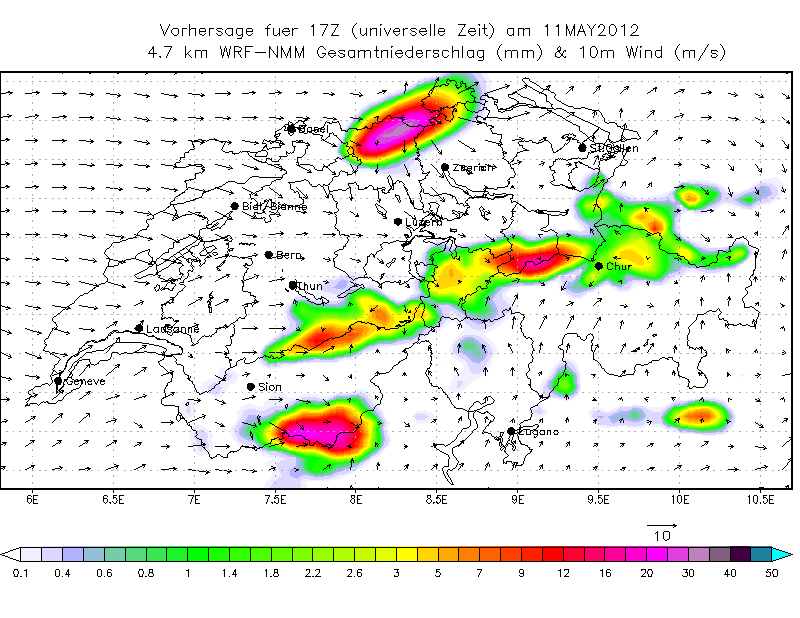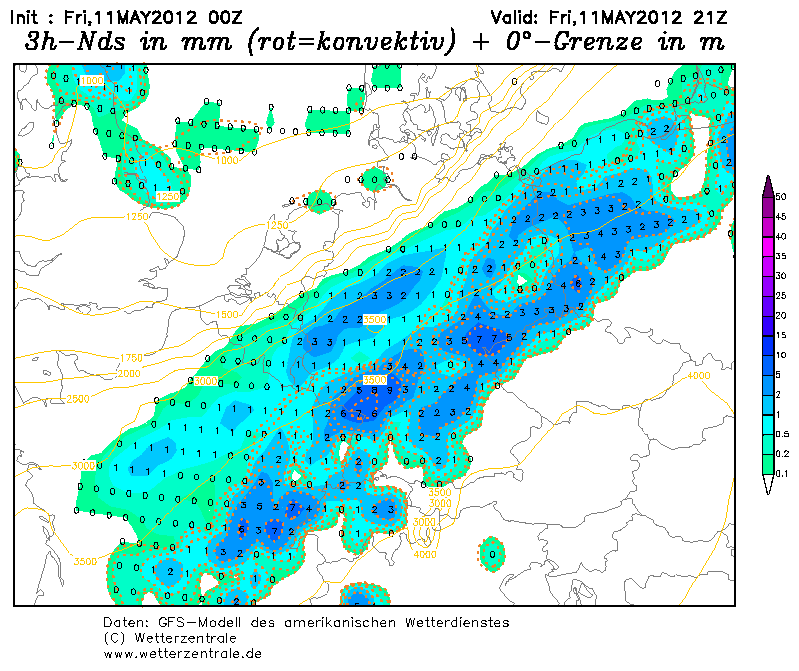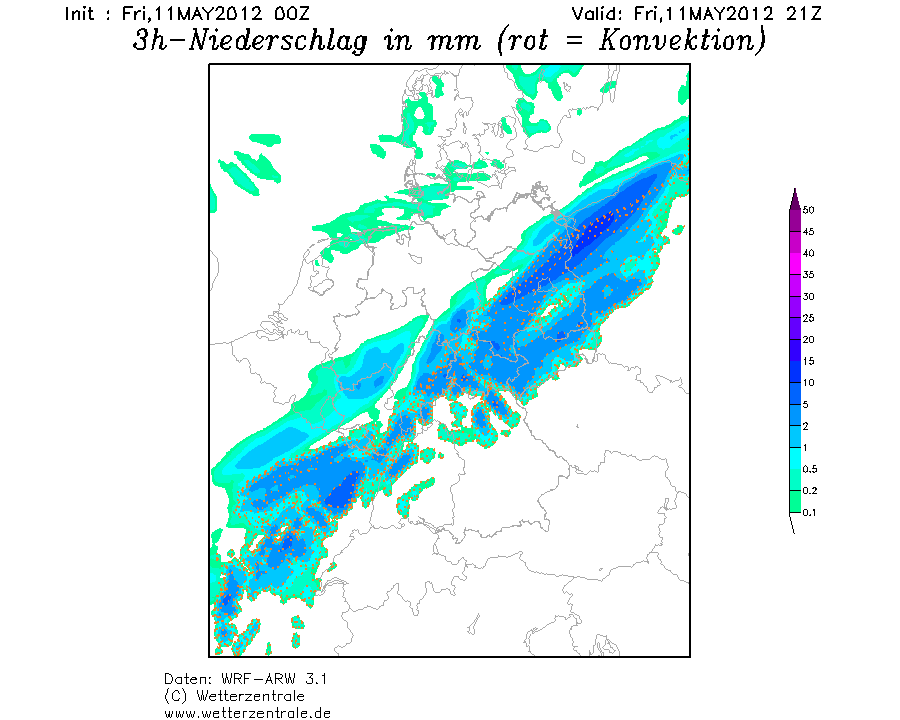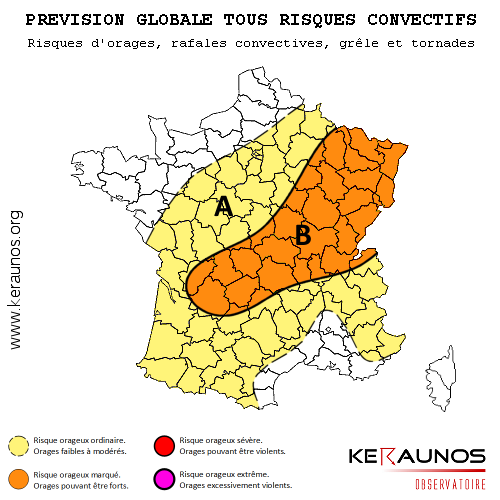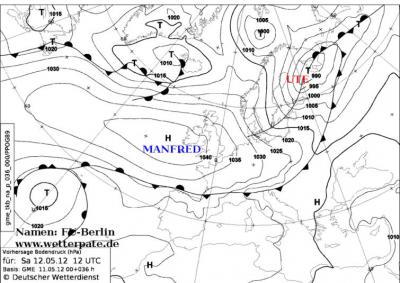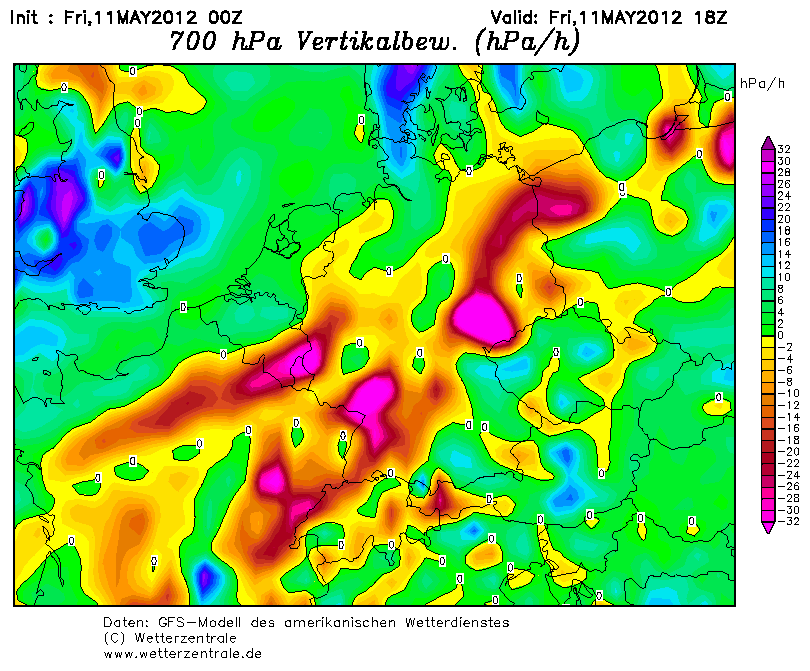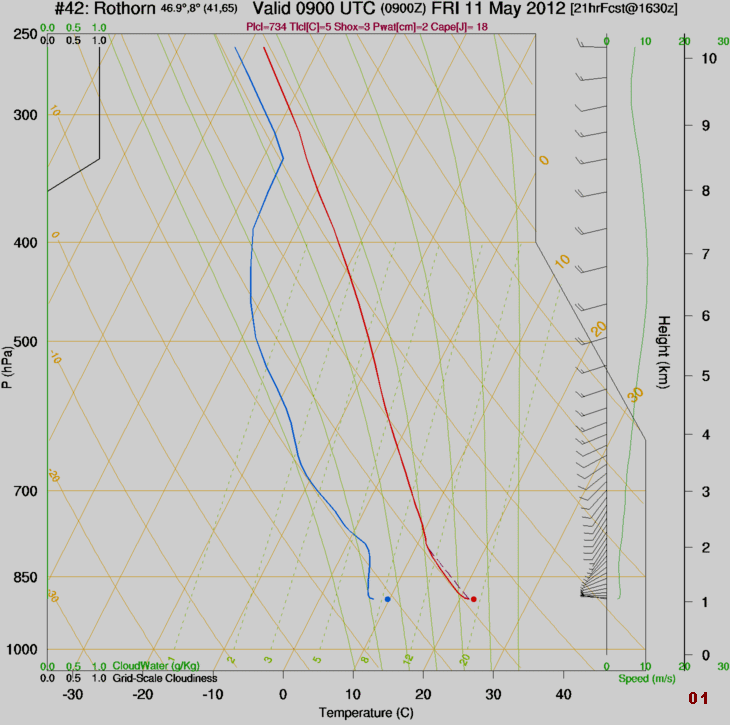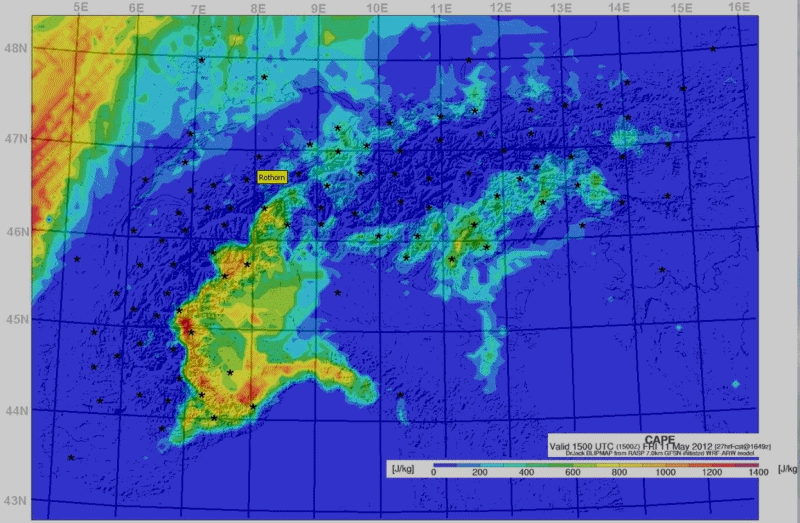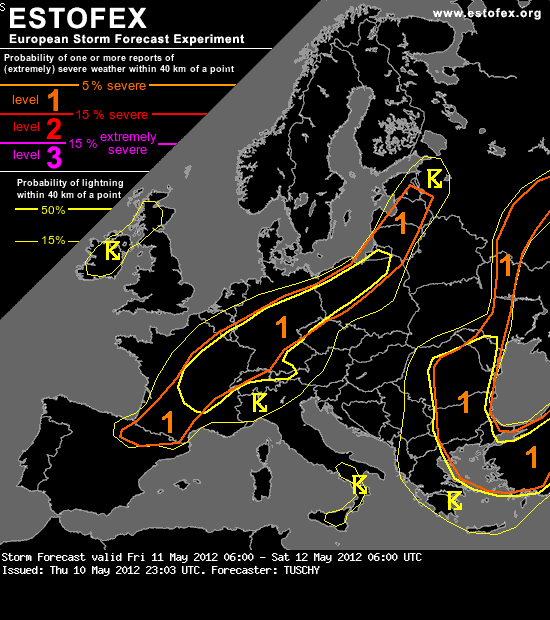
Storm Forecast
Valid: Fri 11 May 2012 06:00 to Sat 12 May 2012 06:00 UTC
Issued: Thu 10 May 2012 23:03
Forecaster: TUSCHY
A level 1 was issued for France, Germany, parts of Belgium, Luxembourg, parts of Switzerland and parts of Poland mainly for large hail, severe wind gusts and heavy to excessive rainfall.
A level 1 was issued for W-Turkey, parts of Greece, Bulgaria, Romania, Moldova, C-Ukraine and northwards mainly for isolated large hail, strong to isolated severe wind gusts and heavy rainfall.
A level 1 was issued for NE Poland to Estonia mainly for a few tornado events and strong to isoalted severe wind gusts.
SYNOPSIS
A potent upper trough over Ireland and Scotland shifts to the east during the forecast, retaining its positive tilt. With no new upstream impulse and/or incoming jet max expected, only a slow shift to the south and marginal amplification to the SW of the upper trough are forecast with strongest jet core placed along its eastern fringe (e.g. S-North Sea, Denmark and S-Baltic Sea). Deep WAA downstream still sustains the strong ridge over SW/C-Europe with a weakening trend seen during the end of the forecast. An ill defined cut-off low over E/SE Europe sparks numerous showers/thunderstorms.
At the surface, a SW/NE aligned cold front is situated in the W/C-European level 1 with a slow progression towards the SE. A diurnal strengthening cycle of this front is forecast.
DISCUSSION
... France, S-Belgium, Luxembourg, Switzerland, Germany and NW-Poland ...
The crude time table is clear with the SE-ward progression of an ana cold front and attendant prefrontal wind shift, crossing C-France/Germany during peak heating and approaching S-France/Switzerland and S-Germany during the night hours.
The main concern will be timing and degree of thunderstorm initiation along that front. Until 15-18Z, no real disturbance at mid-/upper levels is embedded in this straight SW-erly flow regime as positive tilted main trough over UK slowly approaches from the NW. At that time, the surface front is also displaced well to the south of the upper jet core. During the night hours, the SE-ward advancing cold front gradually slows down, which assists in a slow catch-up of the mid/upper jet and the front itself. Also during the evening/night, some weak PVA maxima can be detected over C/N- France with a slight increase in strength during their NE-ward progression along that SW-NE aligned cold front.
All that said, initiation until 15 Z will be probably strongly linked to local orography support or the transgression of the convection temperature. Also, strong frontogenesis with the main cold front is underway between noon and afternoon with robust prefrontal heating (good insolation forecast) and the set-up of a prefrontal weak thermal low pressure channel, which results in stronger backing and better LL convergence. Also, due to ongoing frontogenesis, the direct thermal circulation strengthens, which may also assist in initiation. Then, BL moisture piling over Luxembourg and just to the south is forecast, which may be the result of a modest SW-erly LLJ and better LL moisture advection between the Jura and Vosges Mountains to the N/NE, probably increasing LL convergence. Finally, aforementioned prefrontal wind shift may also serve as focus for isolated initiation. This boundary seems to be best structured over C/E-Germany.
Mixing all that into one forecast, we think that initiation over NE France, Luxembourg and parts of Belgium during late forenoon or around noon is likely with a rapid E/NE-ward progression and increase in coverage and strength. Isolated/discrete activity (mainly linked to the topography and the aforementioned prefrontal wind shift) also evolves over C/E-Germany during the early afternoon hours onwards.
Despite roughly 25 m/s 0-6 km bulk shear and 15-20 m/s shear in the lowest 3 km, main uncertainty regarding organized DMC remains, if storms will be able to root into the warm and moist BL due to the analyzed character of the front itself. Well organized multicells/isolated supercells are likely with this overlap of shear and 500-800 J/kg MLCAPE (with locally peaks in excess of 1 kJ/kg possible). The main hazard will be isolated large hail for elevated storms along the northern part of the level 1 and large hail/strong to severe wind gusts for storms with deviant storm motion, which ride along the surface front to the E/SE. With a rapid increase of LCL height towards the prefrontal air mass (up to 1.5 - 2 km), dry/deeply mixed subcloud layers and modest (in strength) sideward MCS propagation vectors forecast, short line-up of storms with more concentrated swaths of severe winds are possible, mainly over C/E-Germany. The tornado risk is not zero (especially when backing LL wind component due to the prefrontal thermal trough is maximized over C/E-Germany during the afternoon/early evening hours), but ill defined LL lapse rates/CAPE and weak LL helicity keep overall tornado probabilities limited. Finally, with effective PW values well in excess of 30 mm along that front, an heavy to excessive rainfall risk is evident, but also limited due to the forward propagating storm motions. If storm clustering indeed occurs (like a few model outputs in the past showed), heavy/excessive rain will be likely.
Storms also enter NW/N-Poland during the afternoon hours onwards with a large hail/strong to severe wind gust threat due to a more favorable 20 m/s DLS and roughly 800 J/kg MLCAPE overlap. The tornado risk increases over NE Poland and also from Lithuania towards Estonia with SRH-1 in excess of 200 m^2/s^2 and LCLs below 800 m. Coverage of storms becomes questionable with decreasing CAPE, weak cap and modest forcing, supportive for numerous showers/isolated thunderstorms. However, the risk for a few tornado events is present and hence the level 1 was expanded well to the NE.
Between 15-18Z, thunderstorm coverage and intensity also increases over C-France, as thermal gradient along the cold front sharpens but also due to the passage of numerous weak PVA maxima during the afternoon hours onwards....with increasing strength during the night. MLCAPE over C/E-France is in the order of 500-800 J/kg but increases to well in excess of 1000 J/kg over SW-France/far N-Spain, where forcing however will be weaker. Due to the parallel alignement of the boundary to the mean flow, only a small/concentrated area along that front will see an overlap of best shear (25 m/s DLS)/CAPE. Isolated to scattered thunderstorms evolve along that boundary with a fast E/NE ward progression. Large hail and severe wind gusts are likely with any storm and again concentrated swaths of severe wind gusts are possible with any line-up of storms. Highest thunderstorms coverage likely occurs over C/E-France and NW/N Switzerland.
During the night hours, overall thunderstorm activity along the cold front decreases with gradually cooling PBL (weakening thermal gradient). However as the cold front finally approaches the Jura mountains until midnight, thunderstorm activity remains enhanced in that area and we can't exclude the development of a cluster of showers and thunderstorms, which moves from N-Switzerland towards the east, affecting S-Germany and W/NW Austria during the night. Adequate MUCAPE is present during that time frame for a few stronger cells with isolated large hail, but the main activity will be elevated with strong wind gusts and marginal hail, next to heavy rainfall.
No level 2 was added due to numerous restricting effects, mentioned above. However, an upgrade may be performed later on, if any region reveals more distinct signs.
